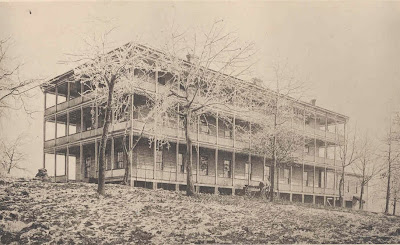Town Creek Park and Twin Falls Trail
Recently, I went on an excursion to Pickens County to hike portions of the railroad bed left behind by the Appalachian Lumber Company railroad. The Appalachian Lumber Company was a short lived logging company (1927-1929) with a railroad track from Town Creek to its lumber mill up in Jocassee Gorges. A flood in 1929 wiped out the company's railroad track in the Jocassee Gorges area which soon forced the company to declare bankruptcy in June 1929. Most of the rails have long since been salvaged, but a few were left behind. But first, I stopped at SC 186 at the Saluda River to take a photo of Old Earls Bridge , a historic steel truss bridge spanning the Saluda River a few hundred yards downstream of the current concrete one. Or at least it was. The bridge is gone, only the abutments remained. My second stop was the Town Creek Park in the city of Pickens, SC. The park is home to the Playground of Promise, a popular playground if my visit was any indication, and to Town Creek Trail, the


